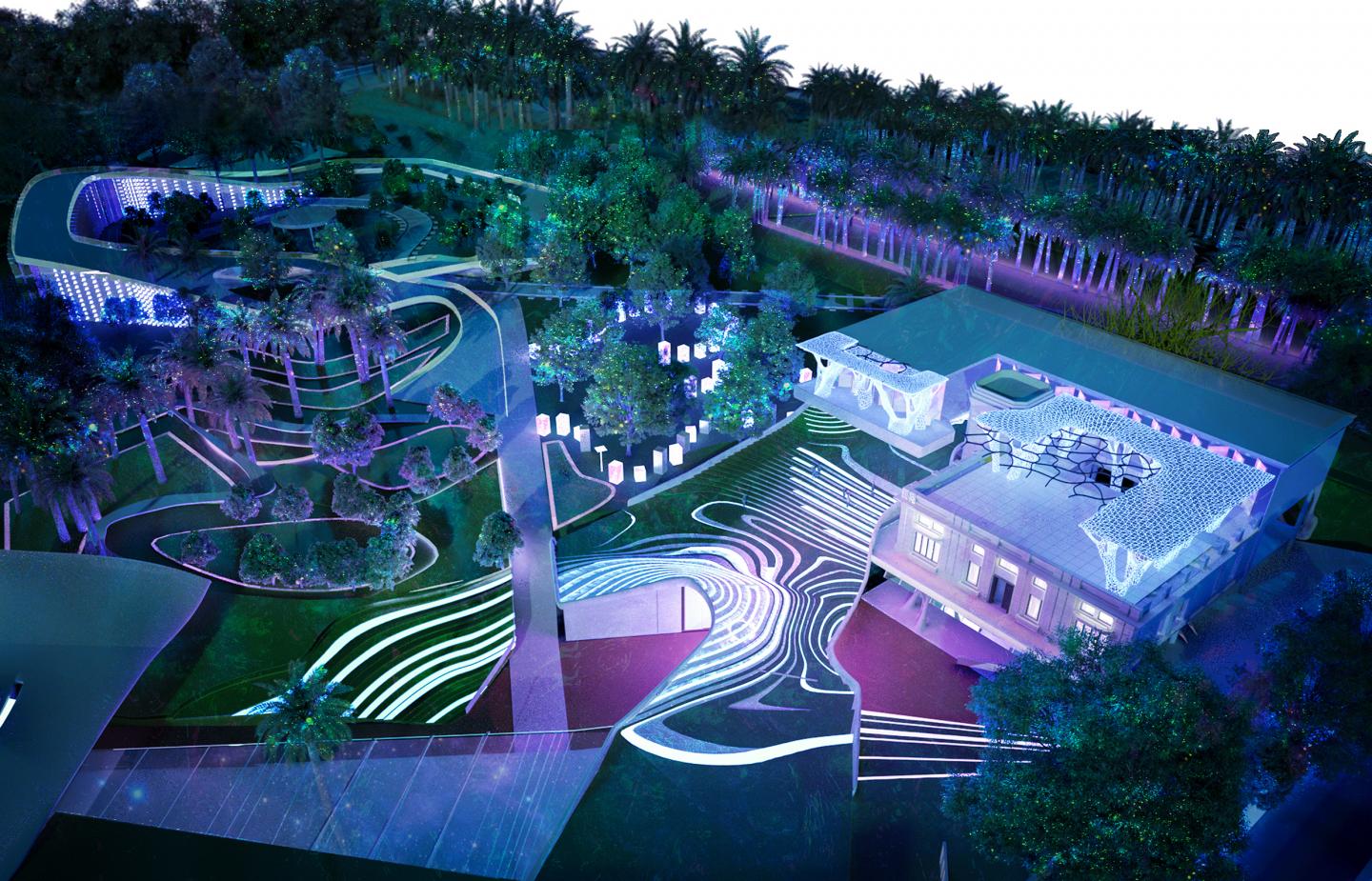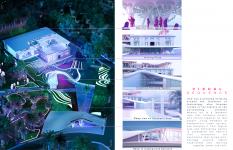How can a building existing around the forefront of technology also become rooted in the history of the surrounding context? Modern art is a feedback loop that connects history and culture together so that people, living members of Alexandria’s urban society, can interpret it. This Digital Arts and Technology Center is considered the nation’s first innovative art destination that brings arts, heritage, science, digital experiences and learning together under one roof.
The design is located in Nouzha Garden Complex which is the most ancient garden in Alexandria, Egypt dating back to the Ptolemaic period. Although the place was considered a public area throughout the different historic eras, the official gardens were constructed in 1820. Capturing the Ephemeral tackles the Revival of ElNouzha Garden using Digital Arts and Technology to create an immersive, entertaining experience with a hint of education to raise awareness about the architectural palimpsest represented in the site: the Cultural Heritage, the Landscape and cosmopolitan Alexandria. This is a prototype that can be implemented in historical parks worldwide.
The general Design Strategy is to preserve the existing elements and maneuver around them to create a better experience to the existing users and to encourage more users to come locally and even internationally. Taking over the abandoned Casino de Nouzha, once famous for the parties and the weddings and retrofitting it to create a versatile Digital Arts center, whilst blurring the lines between architecture and landscape. The Casino accommodated different functions along the years, as it used to be an administrative building gifted by the municipality, a restaurant owned by a Greek resident called, a wedding hall, but now it is left to deteriorate. The adaptive reuse and extension project deals with not only the historical building, but also the contextual design which is the historic landscape.
After studying the site, inspiration was driven from the Banyan Tree which exists behind the historical building. It is a parasitic tree, therefore parasitic architecture was implemented. The bio design was not limited to the architecture language, but also the natural grafting of tree trunks. This is reflected in the computational design age as topology optimization, a mathematical method that optimizes material layout within a given design space, for a given set of loads, boundary conditions and constraints with the goal of maximizing the performance of the system. These columns were used to create a versatile environment for the building; blending in at day and making a statement at night. By not replicating the typology of a typical art center, a flexible open source experiencing of the art is provided, not only limited to the architecture and the interior of the building, but also creating a ripple effect on the whole site using non-material digital technology turning Nature into Art without causing harming it. The ephemeral means lasting for a very short time.
The project purpose is to capture the Nouzha Garden’s fading memory with the newest technology. The proposed park is where curiosity-seekers of all ages go to experience creative innovation without limits, by being a premier destination, both online and offline, for genre-pushing, technology-driven art. The project is a hub that connects artists and scientists together to realize projects using Machine Intelligence implemented in the historical site.
2021
LOCATION: Elnouzha Garden, Alexandria, Egypt
ARCHITECT: Rowan Elselmy











